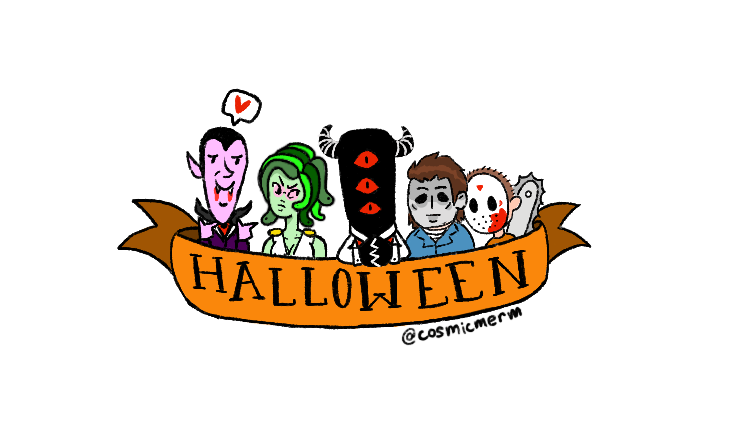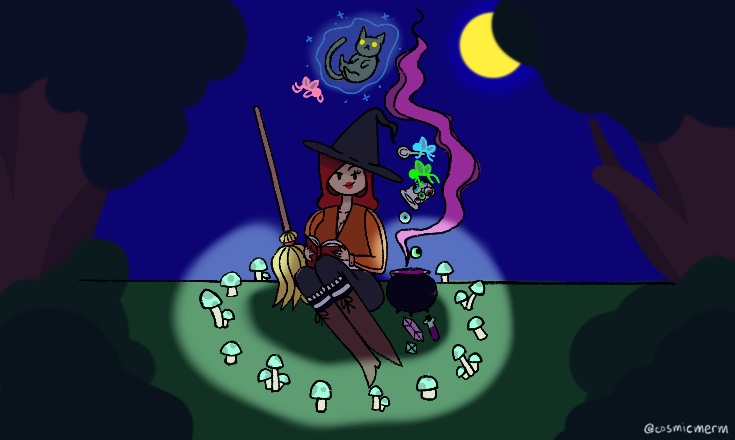
Photo Credit: Tiffany Tablang
Halloween: The Occult Festival
Written by Bethel Fekade, 10/29/2018
While millions of people celebrate Halloween on October 31st without knowing its origins and myths, the history and facts make the holiday more fascinating. Halloween (less commonly known as ‘All Hallows’ Eve’) is widely regarded as an American tradition, but it dates back about 2000 years to the pagan Celts, Indo-European tribes who lived across the western parts of Europe. The Celtic people used to wear special costumes and offer sacrifices such as animals or even humans via their Druids, native priests.
Around October 31st they believed that in the flames which consumed the unlucky victims, they would be able to see their future and be informed on the right path to following life. Food was also presented to pacify the spirits of the dead as they passed on to the netherworld, as well as being a form of thanksgiving for autumn harvests at “The Feast of Samhain” (pronounced SOW-in, with the first syllable said like the -ow in cow). Offerings to the spirits had to be of highest possible quality, as not presenting food -or presenting food of low quality- was believed to anger the ghouls. The modern tradition of trick-or-treating was believed to have evolved from this act of serving food. These practices kept going for years until Christianity emerged, leading to the creation of the All Hallows’/Saint’s day.
This day is celebrated on November the 1st and commemorates saints and martyrs. It was intended to Christianize the pagan Celts and through the years it succeeded. The conversion, however, did not mean losing the occult tradition. In fact, Halloween today is not much different from Halloween thousands of years ago. Then a huge wave of witch-hunting paved way for reformed rituals without gruesome sacrifices. How, then, did Halloween become an American holiday? The turning point was the large scale immigration of Celtic people from present day Ireland, Wales, Scotland and England, to the U.S.A. Irishmen especially fled in large numbers, due to the great Irish potato famine. The immigrants brought with them Halloween and its mystic tales.
The Celts celebrated Halloween as a religious ritual.
Halloween has a very intriguing history indeed as mentioned, but what is Halloween like nowadays? Over all, not much has changed. The exuberant costumes, trick-or-treating and many other aspects came and evolved through myriads of centuries. These days, costumes of evil hideous creatures, skeletons and ghosts are worn by people taking part in Halloween. Skeletons were considered to be the house of the soul by the Celtic people. The Celts also believed in the existence of ghosts. They thought that, in the time of Halloween, the lines between death and life would be blurred for the newly deceased and this was a rationale for claims of seeing a ghost that night.
Common Halloween colors are orange (for harvests) and black (for death). Another symbolic feature introduced fairly recently to the festivities is jack-o’ lantern, the spooky carved pumpkin which is a familiar face, especially in the U.S. The use of pumpkins in making jack-o’ lanterns originated from the Irish. Tales have been told for centuries about ‘Jack’. A commonly told tale goes: “A man named Jack made a deal with the devil in exchange for his soul. One day he got a visit from Jesus and Saint Peter. With the visit came three wishes, which he used to trick the devil out of taking his soul. When he died, he was refused entry to both heaven (by Peter for his sinful lifestyle) and hell (by the devil for his trickery). From hell, he was given an eternal flame and roams the world as jack-o’ lantern.
This year… Seattle Central is organizing and presenting a celebration for Halloween like never before…
The superficial distinctions between Halloween now and thousands of years ago lead to oppositions from all around, however, differences do exist. The Celts celebrated Halloween as a religious ritual. Nowadays, October 31st is believed to be a day for wearing costumes and partying with friends, nothing more. So, while any acts of evil on Halloween ought not to be tolerated, the cultural heritages should be preserved at all costs as they represent mysteries thousands of years in the making.
There is a multitude of interesting ways we can celebrate Halloween. This year on the 31st of October, Seattle Central is organizing and presenting a celebration for Halloween like never before with the theme “The Nun”; from the trick or treat on campus to fun with costumes and haunted houses with monsters so scary you might spit your heart out. So free up your calendar and be a part of this event. Experience Halloween in the most exuberant and spooky manner.


